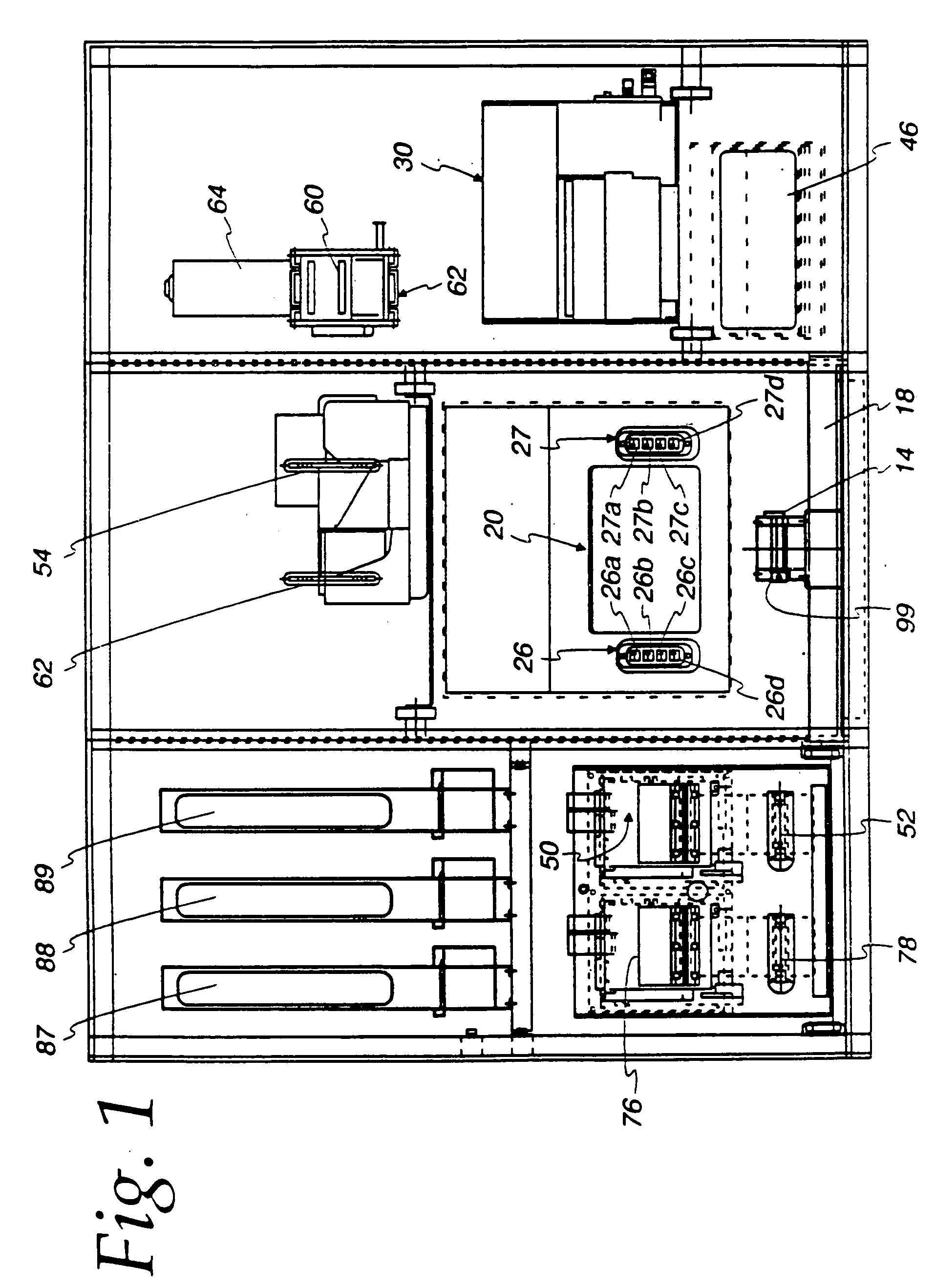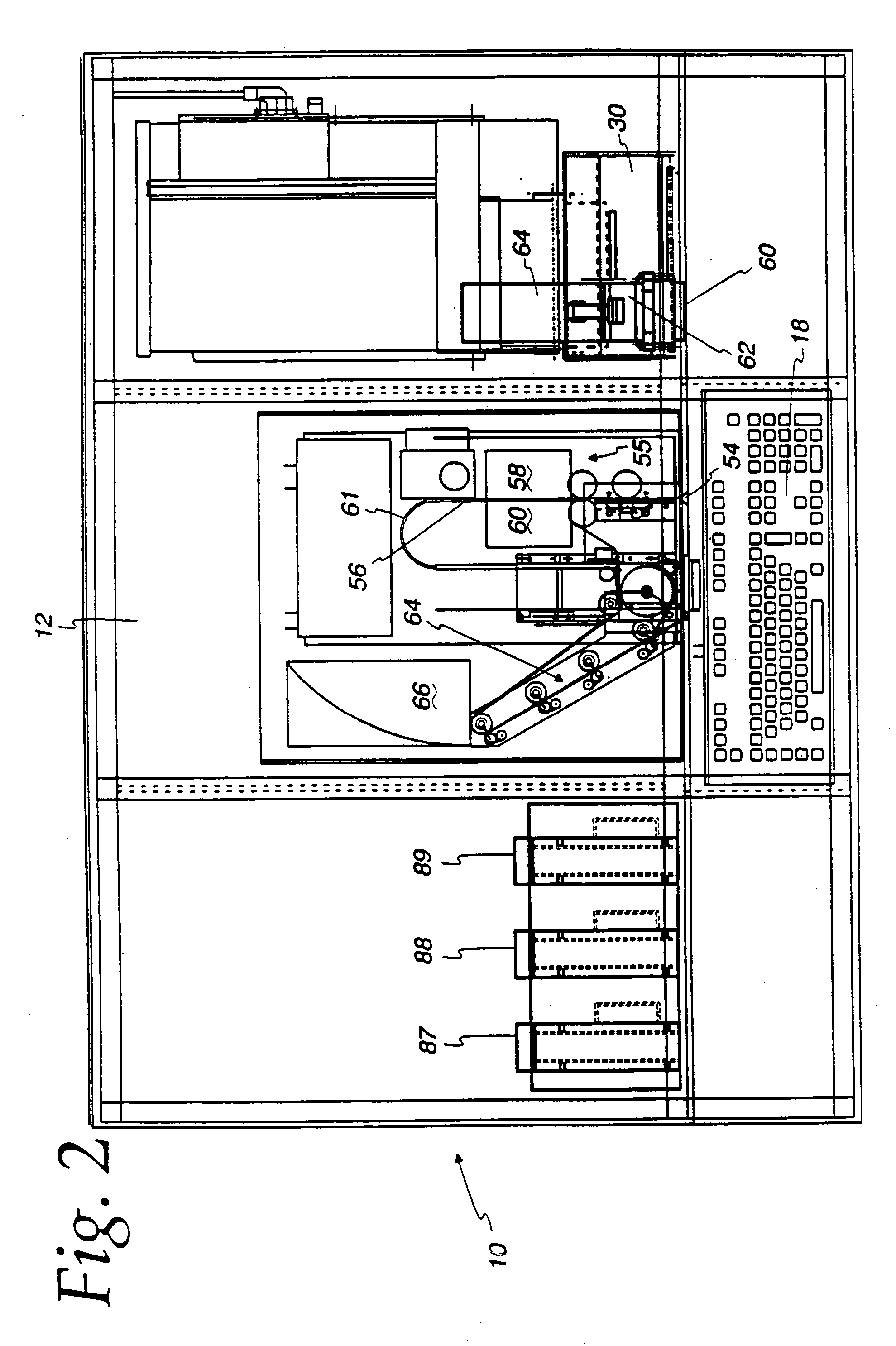Automated document cashing system
a document cashing and document technology, applied in the field of automatic document cashing system, can solve the problems of user escape civil or criminal liability, atms cannot provide such validations with sufficient reliability, security problems, etc., and achieve the effect of reducing the magnification factor and avoiding zoom overshoo
- Summary
- Abstract
- Description
- Claims
- Application Information
AI Technical Summary
Benefits of technology
Problems solved by technology
Method used
Image
Examples
Embodiment Construction
As shown in the drawings for purposes of illustration, the invention is embodied in an automated banking system that includes an apparatus 10 having a housing 12 for housing the components of the apparatus 10 which are to receive an ATM card which can be inserted through an insert, slot or opening 14 in a front wall 16 of the housing 12. The insert slot 14 will accept the usual ATM card, credit cards, IC cards or smart cards. The card slot 14 is located immediately above an alphanumeric user keyboard 18 and below a user display 20 comprising a touch screen of the type sold by Dyna-Pro under its Model No. DTFP 95633. The user keyboard 18 supplies command signals to a microcomputer 21, in this embodiment a 133 MHz Pentium-based personal computer having a 2.1 gigabyte hard disk drive for storing software, a 32 megabyte random access memory for storing instructions and operands, a 133 MHz Pentium microprocessor, an ISA bus, a PCI bus, a serial interface, and a parallel interface. (FIG....
PUM
 Login to View More
Login to View More Abstract
Description
Claims
Application Information
 Login to View More
Login to View More - R&D
- Intellectual Property
- Life Sciences
- Materials
- Tech Scout
- Unparalleled Data Quality
- Higher Quality Content
- 60% Fewer Hallucinations
Browse by: Latest US Patents, China's latest patents, Technical Efficacy Thesaurus, Application Domain, Technology Topic, Popular Technical Reports.
© 2025 PatSnap. All rights reserved.Legal|Privacy policy|Modern Slavery Act Transparency Statement|Sitemap|About US| Contact US: help@patsnap.com



